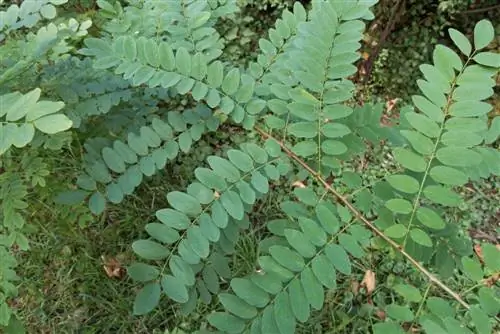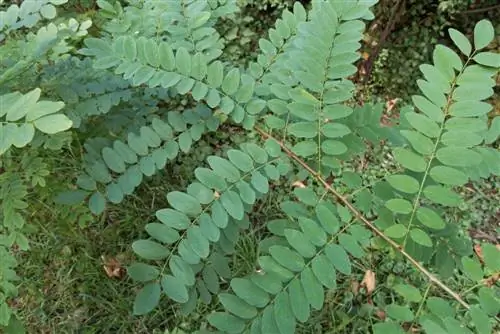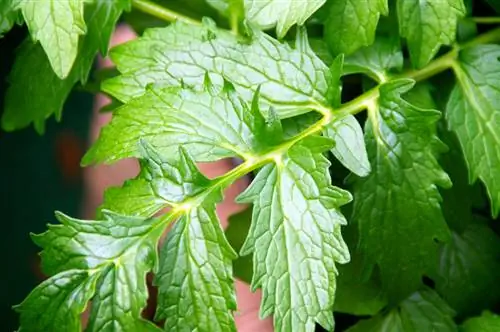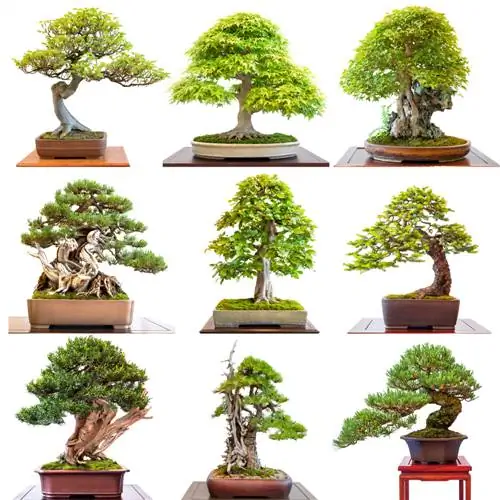- Author admin [email protected].
- Public 2023-12-16 16:46.
- Last modified 2025-01-23 11:21.
It is not for nothing that the robinia is nicknamed “false acacia” or “false acacia”. To a layman, the two trees look very similar. However, a trained eye can tell which species it is from a few significant features. Read below what you need to pay attention to when identifying trees.

How do acacia and black locust differ from each other?
The main difference between acacia and black locust lies in the leaves: the acacia has paired pinnate leaves, while the black locust has unpaired pinnate leaves. The bark of the acacia tree can be smooth or cracked, while the black locust tree has deep furrows and elongated cracks.
Characteristics of Black Locust
The black locust is mostly found as a tree. The genus is rarely referred to as a shrub.
leaves
- mismatched
- up to 30 cm long
- red-brown colored thorns form the stipules
Bark
- deep furrows
- elongated cracks
- gray brown to dark brown
Characteristics of Acacia Tree
The acacia is usually available in the form of a shrub. Only rarely does the plant appear as a tree.
leaves
- pair-feathered
- thorny stipules
Bark
smooth or cracked depending on the variety
Similarity between black locust and acacia
In addition to their similar appearance, acacias and robinias have one thing in common: all parts of the plant except the flowers of the plants are considered poisonous. In particular, you should be warned against eating the bark. Small children, pets and horses are particularly at risk if they are unsupervised. The black locust or acacia has a special appeal to taste due to its sweet smell. The first symptoms of poisoning are
- Nausea
- Vertigo
- Heart racing
- Vomiting
- Daziness
- inner restlessness
Eating robinia or acacia bark even has fatal consequences for animals.
Summary- Difference between Black Locust and Acacia
As you can see, it is quite possible to distinguish an acacia from a locust tree based on small details. To do this, look closely at the leaf shape of the respective plant. Is the foliage paired or unpaired? This feature can be clearly recognized even by laypeople. If the leaves are arranged symmetrically and in an even number on the petiole, this indicates the acacia tree. In contrast, the black locust has a leaf at the end of the petiole. It is a little more vague to identify the trees based on their bark. To do this, you need to know exactly which type of acacia you are dealing with. If in doubt, you should simply seek advice from a specialist at your nearest tree nursery. However, you should definitely not be misled by the term “mock acacia”, as the robinia is often called.






